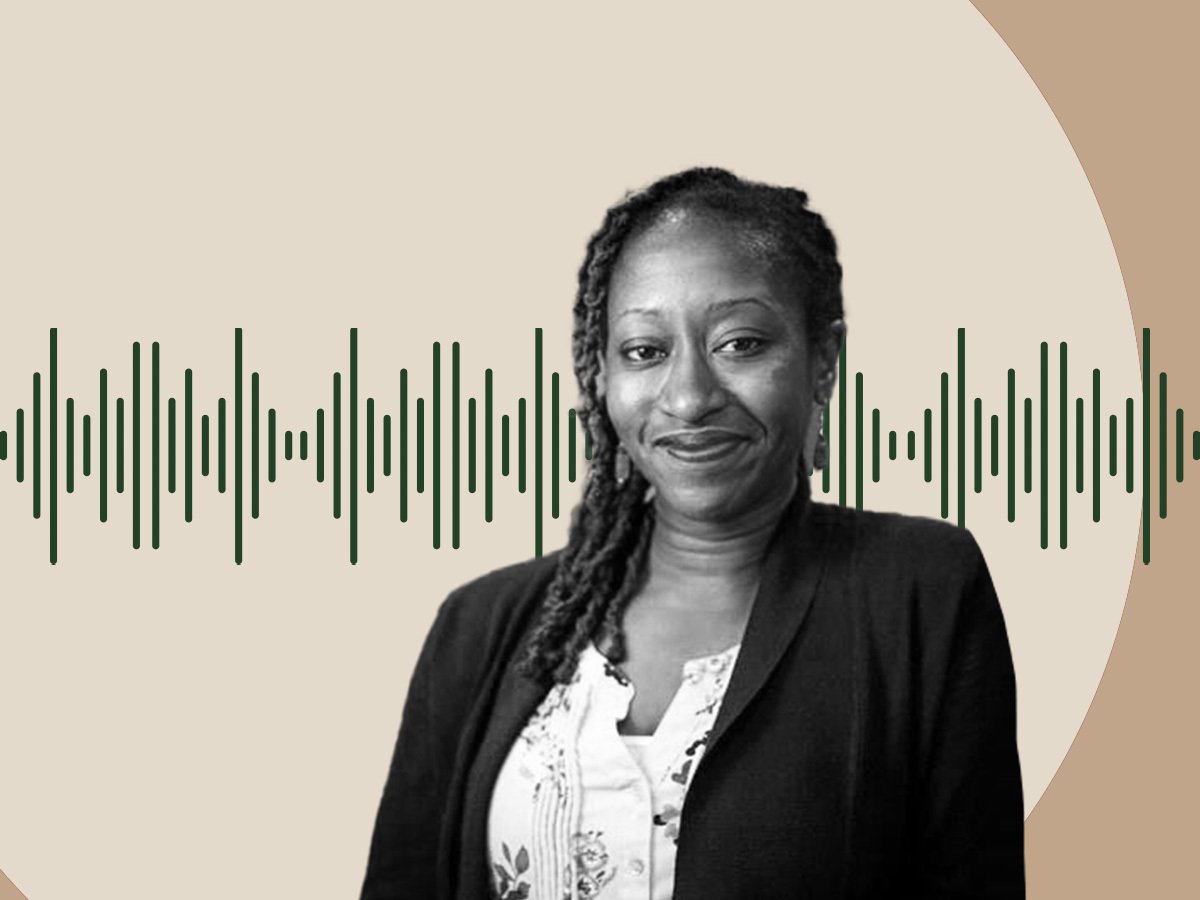
With this article, we conclude our series, Community Development: National Leaders’ Visions. NPQ, in partnership with the CEO Circle—an informal network of BIPOC community economic development leaders—has published the series over the preceding weeks to highlight community economic development leaders’ transformation visions around the issues of racial and economic justice. While the series concludes, the discussion continues and NPQ welcomes additional contributions on these topics.
Decades of political debate and conversation have been devoted to addressing the many flaws of our capitalist system, including its tendencies to promote material gain as a central value, exacerbate class-based inequality, and favor economic gain for the few, even as the basic needs of the many often go unmet.
Moving from radical theories and debates toward implementation of new models for economic prosperity can be achieved by uprooting the values inherent in our current economic system. In The Whiteness of Wealth, author and Emory University law professor Dorothy Brown documents how basic systems in US society, such as the tax code, often serve to entrench class and racial divides. Changing these patterns requires doing something different.
In my own work, I have chosen, along with other Black, Indigenous, and other people of color, to embrace specific cultural and spiritual traditions which prioritize our relationship to land as a central communal resource for generating prosperity for all members of the broader community.
An example of collective land ownership at scale can be seen with the Agua Caliente Band of Cahuilla Indians, which has legal title to 28,000 acres (43.75 square miles) of land in California’s western Coachella Valley—including portions of Palm Springs, Cathedral City, Rancho Mirage, and unincorporated Riverside County. The Cahuilla maintain ownership of land but have entered into 1,175 commercial, 7,671 residential, and 11,118 timeshare leases—typically with 99-year terms. All of this is notably under the jurisdiction of the US Bureau of Indian Affairs, rather than more direct independent Indigenous control. Newly appointed Secretary of the Interior, Deb Haaland is the first Indigenous cabinet member ever to oversee the Bureau of Indian Affairs, opening the possibility for more serious transformative change based on communal values.
The collective values evidenced by community ownership, as maintained by the Cahuilla, stands in opposition to the common US legal and tax systems which favor individual property ownership, with the ability to earn money from the land by extractive uses. We must seize this moment to encourage and fully support leaders who question and firmly reject the continual buying and selling of land itself as the primary means to increase individual wealth.
Making the Shift to Community Land Ownership
As our leaders revisit public policies and regulations which have limited and excluded our BIPOC communities from ownership of land—restricting our access to the full range of quality housing options and preventing associated wealth creation opportunities for generations in the process—now is the time to make a radical shift toward scaling proven community-based models for shared ownership of land and resources.
These models include various forms of shared equity homeownership such as affordable limited equity cooperatives (LECs), below-market deed restricted homes, resident-owned communities (ROCs) and community land trusts (CLTs). If expanded into the mainstream community development sector with supportive public policies, appropriate financing, and clear legal systems, shared land and homeownership models can, over the coming decades, advance racial equity with fair access to economic opportunity, promote diverse neighborhoods with expanded access to quality public education, and ensure health equity for low- and moderate-income BIPOC families. One hopeful sign, illustrating the growing power of emerging leaders with authentic community-based values, is the recent ascension of progressive democratic socialist candidate India Walton in Buffalo.
In June, first-time political candidate Walton upset veteran four-term Buffalo, New York Mayor Byron Brown to win the mayoral Democratic primary. Even though Brown ended up defeating Walton in the November general election through a write-in campaign (and with the help of Republican voters and donors), Walton’s campaign still speaks to the rise of the type of community-minded leadership our movements need.
In the years before her run for mayor, Walton—a 39-year-old community organizer, activist, and registered nurse—along with her friends and neighbors, had led and implemented a multi-year planned strategy to prevent the displacement of Black families in Buffalo’s Fruit Belt neighborhood.
Born and raised on Buffalo’s east side, in 2015 she moved into a rented home along with her four children in the historically Black Fruit Belt community of over 2,600 residents. At that time, the city’s ownership of more than 200 vacant lots in the neighborhood made it the largest landowner. Immediately to the west, the planned expansion of the Buffalo Niagara Medical Campus, known for its clinical care, research, and education facilities employing over 17,000 people, was attracting market-based speculative real estate development. Without an intentional plan for inclusion, displacement threatened the adjacent Fruit Belt community residents of whom 42 percent lived in poverty.
Sign up for our free newsletters
Subscribe to NPQ's newsletters to have our top stories delivered directly to your inbox.
By signing up, you agree to our privacy policy and terms of use, and to receive messages from NPQ and our partners.
Walton’s experiences as a nurse in Buffalo’s public schools and her leadership as a representative in the local 1199 SEIU union, led to her belief in the need for systemic change to increase opportunities for more Black families in her community. She worked as a community organizer for Open Buffalo, and eventually became the Fruit Belt Community Land Trust’s founding executive director.
The Fruit Belt CLT is based on a radically reimagined 1960s model for communal land ownership—successfully developed by Black organizers and activists as an effective means to resist white supremacist oppression in rural southwest Georgia. Local Albany, Georgia real estate broker Slater King and his brother local lawyer C.B. King, cousins of Dr. Martin Luther King Jr., along with Student Nonviolent Coordinating Committee organizer Charles Sherrod and others created a communal land ownership model. This model was based with a newly formed nonprofit organization called New Communities, which was intentionally designed to build and protect the political power of Black tenant farmers.
Today, New Communities is led by Dr. Shirley Sherrod as a thriving 1,600-acre Black owned working farm, which has been contracted to supply produce for the upscale national health food chain Sweetgreen. In a striking parallel to the 1960s movement strategy and outcome, Walton’s leadership combined with the support of other resident advocates successfully pressured the city to place a moratorium on the sale of numerous vacant neighborhood lots with the city transferring 50 lots to the CLT. A partnership of the CLT and Habitat for Humanity was formed to build new, affordable homes on those lots. “Our city government didn’t have a plan for us, meaning they had a plan for us not to be in our community,” said Fruit Belt activist and resident Dennice Barr. “But we’re still here.”
Building Power and Ownership in the Lone Star State
Similar organizing and power building for community control of land and political leadership scenarios are actively playing out in other cities. The current mayors of both Houston (Sylvester Turner) and San Antonio (Ron Nirenberg) both are supporters of grassroots directed CLT efforts that aim to at least partially addressing the urgent affordable housing needs of BIPOC populations. Such populations are increasingly vulnerable in the economic wake of the pandemic, but who have long had to face pre-existing housing shortages and the impacts of decades of flawed public policies rooted in systemic racism.
Mayor Turner’s administration and actions are particularly noteworthy, given the Uptown Development Authority’s April approval of a precedent setting commitment of $53 million, earmarked for specific use by the Houston Community Land Trust. Arguably this milestone marks the single largest public bond funding commitment supporting a CLT ever made in the over 50-year history of the CLT model’s use. It also prompts speculation about the future and a central question: can leaders of color be expected to fight for and successfully grow the scale and impact of communal land ownership models, without the benefit of significant federal funding, supportive policies, and greater access to philanthropic resources?
Philanthropy and Public Policy
The 2020 research study, Racial Equity and Philanthropy—Disparities in Funding for Leaders of Color Leave Impact on the Table, identifies two race-based factors that impede philanthropic efforts to advance social change: 1) “Understanding the role of race in the problems philanthropists are trying to solve, and 2) The significance of race when it comes to how philanthropists identify leaders and find solutions.”
The study findings also highlight the necessity of taking the crucial step of ending colorblind grant making. Their data analysis indicates a philanthropic racial funding gap of approximately $20 million exists between Black-led and white-led early-stage organizations. A related additional challenge lies in the fact that the unrestricted net assets of the Black-led organizations are 76 percent smaller than their white-led counterparts. An inherent racial bias in both relationships and processes between grantmakers and applicants of color remains a clear barrier to increasing prosperity for BIPOC communities.
Fully realizing the potential of social change to build community wealth and increase prosperity requires that adequate philanthropic resources be made available using an equitable selection process. The power of communal land ownership, as envisioned and valued by communities of color, can offer a path forward if philanthropy has the courage to embrace and proactively fund leaders of color at the forefront of the change. A similar challenge and critical response are also needed to shift our nation’s public policy framework to appropriately address race rather than continuing to promote the use of an ineffective color-blind policy lens. Our BIPOC struggle for control of land and resources is intimately tied to increased federal protection of voting rights, in the face of numerous state legislative efforts to limit or reduce voting access.
The next several years will prove to be crucial to discovering if our nation can truly overcome the multiple legacies of racism by collectively uniting to demonstrate a consistent commitment to advancing racial equity and justice which measurably benefit people of color.
The Need for Radical Empathy
Can a majority of US registered voters, 69 percent of whom are white, be persuaded to consistently care about the daily and long term welfare of people of color? Even as demographic trends continue to evolve, as of 2019 Black and Latinx voters combined make up 22 percent of all registered voters (approximately 11 percent each) and those from other racial or ethnic backgrounds make up the remaining eight percent of registered voters.
I pose the question of human caring in the context of my own impatience and disappointment with too many elected leaders who have denied the realities and impacts of systemic racism and resist the teaching of critical race theory. I feel an acute mix of surprise, anger, and deep sadness to learn recently of 18-year old Jordan Crowley, a biracial man in need of a kidney transplant. Based on a flawed 1999 study, Jordan was deemed to be “too Black” in order to rank high enough on the national waitlists to receive a kidney transplant.
Do we all really care enough to change that inequitable dire consequence of racism, as well as the many other race-based disparities in access to land, housing, health, transportation, education, wealth, and power impacting Jordan and the millions of us who share his Black heritage? Radically demonstrating greater human caring across racial lines requires us all to examine and prioritize values that center empathy and community, which are inevitably linked to the future of any movement for racial justice and prosperity.













